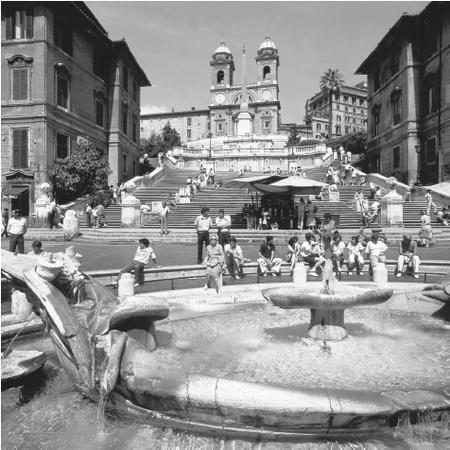Government. Italy is a republic with twenty regions under the central government. In 1861, the Italian states were unified under a monarch. The republic was formed on 2 June 1946 and on 1 January 1948, the republic's constitution was proclaimed. There are three branches of government: executive, judicial, and legislative. The legal system is a combination of civil and ecclesiastical law. The system treats appeals as new trials. There is a Constitutional Court that has the power of judicial review. A chief of state (the president) and a head of government (the prime minister) head the executive branch. There have been numerous changes of government since the end of World War II. There are two houses in the parliament: the Senate and the Chamber of Deputies. Both houses have elected and appointed members chosen through a complicated system of proportional representation and appointed. Voters must be 25 years old to vote for senators but only 18 in all other elections.
Leadership and Political Officials. Italy has been plagued with too many political parties and, in some sense, every Italian is his or her own political party. Recent reforms have not ended the problem. New parties have grown from combinations or alliances of a number of parties. The major parties are Olive Tree, Freedom Pole, Northern League, Communism Refoundation, Italian Social Movement, Pannella–Sgarbi's List, Italian Socialist, Autonomous List, and Southern Tyrol's List. The Olive Tree is the party of the democrat left. The Freedom Pole is the party of the right to center. Other parties occupy various positions on the political spectrum. There are certain rules of respect toward those in power. Presents are usually given, and support is promised in return. People approach those in power through intermediaries.
Social Problems and Control. Italians resent intrusions into private and family life. They have had centuries of practice in evading what they consider unjust laws. The major crime problem comes from the Mafia. Special courts and task forces have made some headway against the Mafia. Scandals linking politicians and judges to the Mafia have led to greater action in seeking its extermination. Street crime, such as robbery, is prevalent in the larger cities, and murder is a serious problem, with about one thousand five hundred per year, and an additional two thousand attempted murders per annum. The national police are found throughout the country. The judicial system operates on an inquisitorial system. There is no presumption of innocence, and judges routinely question defendants. The Catholic Church, family, and friends serve as strong informal social controls.
Military Activity. The country's president is the commander of the armed forces. He also chairs the Supreme Council of Defense. Male military service is compulsory. Italy is a member of the North Atlantic Treaty Organization (NATO). The first significant deployment of troops outside Italy took place in 1997, when troops were sent to Albania to help control the chaos that resulted with the collapse of the economy. As a member of NATO, the country allowed its air bases to be used in attack on Yugoslavia.

Read more: Culture of Italy - history, people, clothing, women, beliefs, food, customs, family, social http://www.everyculture.com/Ge-It/Italy.html#ixzz1ZLMEJh9R
Leadership and Political Officials. Italy has been plagued with too many political parties and, in some sense, every Italian is his or her own political party. Recent reforms have not ended the problem. New parties have grown from combinations or alliances of a number of parties. The major parties are Olive Tree, Freedom Pole, Northern League, Communism Refoundation, Italian Social Movement, Pannella–Sgarbi's List, Italian Socialist, Autonomous List, and Southern Tyrol's List. The Olive Tree is the party of the democrat left. The Freedom Pole is the party of the right to center. Other parties occupy various positions on the political spectrum. There are certain rules of respect toward those in power. Presents are usually given, and support is promised in return. People approach those in power through intermediaries.
Social Problems and Control. Italians resent intrusions into private and family life. They have had centuries of practice in evading what they consider unjust laws. The major crime problem comes from the Mafia. Special courts and task forces have made some headway against the Mafia. Scandals linking politicians and judges to the Mafia have led to greater action in seeking its extermination. Street crime, such as robbery, is prevalent in the larger cities, and murder is a serious problem, with about one thousand five hundred per year, and an additional two thousand attempted murders per annum. The national police are found throughout the country. The judicial system operates on an inquisitorial system. There is no presumption of innocence, and judges routinely question defendants. The Catholic Church, family, and friends serve as strong informal social controls.
Military Activity. The country's president is the commander of the armed forces. He also chairs the Supreme Council of Defense. Male military service is compulsory. Italy is a member of the North Atlantic Treaty Organization (NATO). The first significant deployment of troops outside Italy took place in 1997, when troops were sent to Albania to help control the chaos that resulted with the collapse of the economy. As a member of NATO, the country allowed its air bases to be used in attack on Yugoslavia.

Italian architecture—especially the use of public space—encourages socializing.
Read more: Culture of Italy - history, people, clothing, women, beliefs, food, customs, family, social http://www.everyculture.com/Ge-It/Italy.html#ixzz1ZLMEJh9R
No hay comentarios:
Publicar un comentario